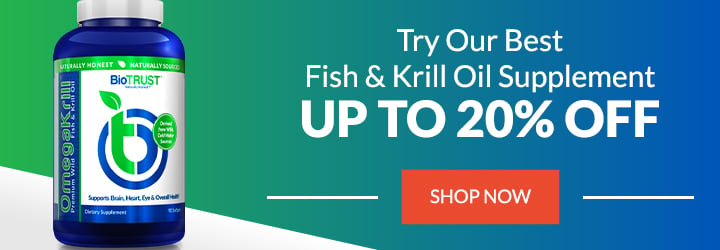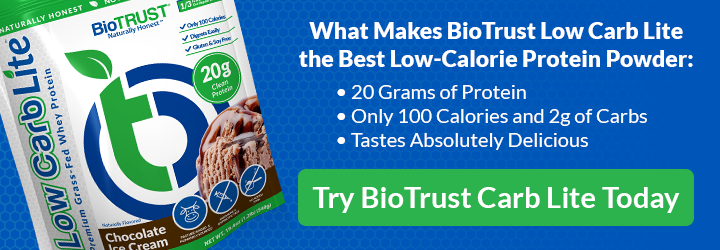Key Nutrients for Women in Each Decade of Life

No matter how young or old you are or what your gender is, it’s important to eat a nutrient-rich diet that’s made up of mostly minimally processed foods and to drink plenty of water. After all, the food you eat is what ultimately helps you stay healthy and strong. That’s just the basics.
Beyond that, however, are nutrients that become even more important, depending on your stage in life. For instance, there are specific nutrients that can help support your body’s bone building or fertility. Other nutrients may help your body move through perimenopause more gracefully. And others may promote brain functioning later in life.
Knowing these nutrients can help promote peak performance and help you feel your best through every decade.
Essential Nutrients for Women in Each Decade of Life
Tending the 20s
If you’re currently navigating your 20s, you’ve likely finished much of your schooling (though learning is, of course, lifelong). You are also learning how to balance work, creating a career, spending time with friends, and exploring or even establishing relationships. You may also be discovering how much work adulting takes as you budget rent, food, transportation, perhaps student loans, and more. On top of all that, you may even be preparing for parenthood or already caring for little ones.
Key nutrients in this stage will provide your body with the energy you need to keep up with your hectic work, social, and family life. They can also provide hormonal support as you consider your desires to have children now or in the future as well as to support your body if you’re using hormonal birth control. Plus, until you reach your late 20s, your body is also busy building bones.
To make sure you’re nourishing your body during this increasingly busy decade, include:
• Calcium, vitamin D, and vitamin K for strong, healthy bones and overall health as women are still building bones until their late 20s. As part of your healthy diet, make sure you’re eating plenty of leafy green vegetables, nuts, and dairy. Calcium is abundant in dairy foods as well as most dark leafy greens and more.
• Folic acid is vital during the child-bearing years as it can protect against birth defects (specifically neural tube defects or defects of the spinal cord and brain that can occur before you even know you’re pregnant). Folate is also important for producing red blood cells, to help your cells produce energy. Beef liver, lentils, chickpeas, asparagus, spinach, broccoli, asparagus, and avocados are all good sources of folate.
• Potassium is needed for the proper function of the heart and skeletal muscles, yet most women from 20 to 39 years old get less than half of the recommended amount. Get enough by eating all of your servings of vegetables (2.5 cups per day) and fruits (2 cups).
• B vitamins are also important for providing energy to keep up with your busy lifestyle. Grass-fed beef once or twice weekly can also provide nutrients for energy and, as a protein-rich food, can help keep blood sugar levels at an even keel.
• Vitamin C supports a healthy, balanced immune system and recovery from exercise and can be found in a wide variety of vegetables and fruits.
• Iron is essential for red blood cells, and many women in their 20s and 30s don’t consume enough. And if you don’t have enough iron, you’ll likely feel both mentally and physically drained. Because women lose iron every month through menstruation, it’s important to consume enough (but not too much). Iron can be found in two forms, heme, which is the most easily absorbed, from meat, seafood, and poultry, and non-heme, which is found in some plants (e.g., pumpkin seeds) and fortified foods.
The Thrilling 30s
As we enter our 30s, women often find priorities shifting. This is a time when many women settle into their careers while others choose to focus on family (or often, balance both). Fertility as well as healthy pregnancies are often top priorities (though certainly not always). Important nutrients to include in the diet are:
• Folic acid: Consuming plenty of beans, leafy greens, and quinoa can help maintain folic acid levels.
• Healthy fats (e.g., omega-3 fatty acids) as found in salmon and other fatty fish, nuts like walnuts, seeds like chia, and olive oil can provide the healthy fats needed at this stage of life. Healthy fats are also needed for a child’s cognitive development. So, these types of fats are vital for pregnant or breastfeeding moms.
• Vitex Chaste Tree Berry to support reproductive balance and healthy pregnancy for those who want to support fertility.
• Vitamin E is an essential nutrient for everyone, but it’s especially important for supporting fertility for both men and women. Vitamin E can be found in avocados and pine nuts.
• Calcium becomes even more important after the age of 35, as that’s when most women start losing bone mass. Get enough calcium by eating plenty of healthy dairy foods like yogurt, lower-calorie cheeses (e.g., cottage cheese or ricotta), and leafy greens like spinach or kale, broccoli, and canned fish with bones (e.g., sardines or salmon).
• Vitamin D is vital for ensuring the body can absorb calcium. It’s also important for the immune system, yet as we age, it gets harder for the body to synthesize this vital nutrient. It helps to get some sunlight (without the risk of burning) to allow the body to make vitamin D. You can get vitamin D from tuna, salmon, egg yolks, or fortified milk or choose a quality vitamin D supplement.
If you’re ready to (or planning to) get pregnant, start taking prenatal vitamins that provide folic acid as well as other vital nutrients as fertility and pregnancy put additional demands on the body.
Finding Your Way Through the 40s
One of the most challenging decades for many women is their 40s. Childbearing is likely coming to an end, though it’s still a possibility. And it can be difficult to juggle priorities for child-rearing while possibly increasingly helping aging parents. Of course, that’s on top of greater career demands and shifting relationships (especially if children are beginning to leave the nest). Plus, our bodies are changing as we enter perimenopause, which can lead to greater difficulty managing weight, changing periods, and noticeable differences in hair, skin, etc. To manage this challenging decade, nutrition is as important as ever.
Dietitians also note that the metabolism can begin to slow during this decade. So, you may need to increase your activity levels or consume about 100 fewer calories per day than you ate in previous decades to maintain weight. You do, however, still need to eat a healthy diet to fuel your busy lifestyle. Some of the most important nutrients include:
• Protein, which helps level out blood sugar and increase satiation to help better manage weight. What’s more, by the time women hit their 40s, they can start to lose muscle mass—up to 8% per decade. Protein helps your body build and repair muscle mass, which is important for sustained energy, improved healing, and metabolism.
• Magnesium, which can help support hormone levels, promote more restful sleep, keep muscles and bones healthy and strong, and much, much more.
• Probiotics can be helpful at any age but in this stage, digestive issues can become more obvious or troublesome. Ensure you’re eating fermented foods, such as sauerkraut, kefir, kimchi, or yogurt daily to help balance your gut bacteria. In addition, you may choose a quality probiotic from a reputable company. Digestive enzymes can also be beneficial.
• If you experiencing uncomfortable fluctuations in hormones, chaste tree berry (Vitex agnus-castus) or black cohosh may also be useful.
• Phytoestrogens may also help balance hormones. In your 40s, you may experience a drop in estrogen levels. Natural phytoestrogens like those found in cruciferous vegetables and other foods may help with hormone balance.
• Antioxidants may be increased at this time as well to help improve skin elasticity and promote healthy aging. Add more antioxidants to the diet by consuming more berries, peppers, spinach, and more.
Keep eating plenty of foods rich in calcium, vitamin D, and fiber.
Feeling Fabulous in the 50s
After juggling so much in our 30s, 40s, and perhaps early 50s, this decade can start to feel like one of the best. Children are self-sufficient (at least more so), and we hopefully feel more secure in our careers. We may also be planning or even preparing for retirement, or at least a bit more freedom. Health, of course, becomes a top priority as our bodies age, but this is a time in life when it may be easier to fit in a regular fitness routine and self-care. We can also better prepare our bodies to age well by eating plenty of nutrient-filled foods to support heart and brain health. Key nutrients include:
• Vitamin D and calcium to keep your bones strong.
• Omega-3 fatty acids as in your 50s, heart health becomes a growing concern. Foods to include even more in this decade include salmon and other fatty fish and flaxseed oil.
• Antioxidants help fight free radicals and promote healthy levels of inflammation. Antioxidant-rich foods like blueberries, spinach, carrots, and pomegranates can help promote the health of the heart and brain.
• Specialty ingredients like chaste tree berry, black cohosh, and ashwagandha, to support hormonal changes and menopause symptoms, such as disrupted sleep, hot flashes, and night sweats.
• Zinc is another important nutrient for helping balance hormones and supporting the immune system. Fortunately, many foods (as well as supplements) are rich in this critical mineral. It can be found in meat, shellfish, legumes, nuts and seeds, and more.
• Creatine, when combined with a regular exercise routine, is well-known for helping reduce the natural decline of muscle that becomes more noticeable during this decade. It can be found in red meat, chicken, pork, and other meats and fish as well as created in the body with the help of the amino acids arginine, glycine, and methionine as found in foods like pumpkin seeds and white beans. The easiest way to consume more creatine, though, is via a quality supplement.
• Fiber, again, is important throughout life, but as you hit your 50s and beyond, fiber-rich foods become more important for managing cholesterol levels and supporting heart health. You may want to choose to eat more beans for protein sources as well as including oats, barley, nuts, and plenty of vegetables and fruits in the diet.
Other heart-healthy foods include garlic, onions, leeks, and leafy greens. Don’t forget spices which both provide greater flavor and boost nutrition. Some to add include turmeric, pepper, ginger, cinnamon, and sage.
The Satisfying 60s and Beyond
Once you reach your 60s, you may be facing a downturn in your career, but most people in their 60s are engaged in work and family and are doing better, mentally and emotionally, than they ever expected. If you’re like most people in this decade (over 70%), you’re either very happy or pretty happy… and not at all ready to slow down. In fact, even if you’re getting ready for retirement (or been there, done that, thank you), are looking stylish with a bit more grey hair in your hair, and showing off photos of the grandkids, the adventure is just beginning. Heck, you may even be ready for a new job or career (with just a bit more freedom) or a new passion or hobby.
With so many changes, it’s also important to nourish your body with:
• Protein, which is vital for building and maintaining muscle mass to keep you strong through the decades. It’s also the most satiating macronutrient, which can help you maintain your weight. Choose quality meats, poultry, fish, beans and legumes, eggs, and dairy to keep you going.
• Fiber is another nutrient that’s vital in every decade and especially as we get older to keep the GI tract running smoothly, promote heart health, and even decrease the risk of other diseases (e.g., diabetes and some types of cancer). Choose whole-grain foods like oatmeal, brown rice, and popcorn, and of course, consume plenty of vegetables and fruits of all varieties.
Discovering how to nourish your body through every decade can help you navigate the changes all women experience. It can also help decrease the risk of diseases and other complications as you age. The goal is to ultimately live your best life through every age by providing the dietary building blocks needed each decade.








